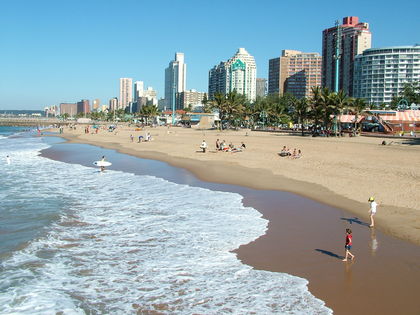CUBA

Republic of Cuba
República de Cuba
CAPITAL : Havana (La Habana)
FLAG : The flag consists of five alternating blue and white horizontal stripes penetrated from the hoist side by a red triangle containing a white five-pointed star.
ANTHEM : Himno de Bayamo (Hymn of Bayamo), beginning "Al combate corred bayameses" ("March to the battle, people of Bayamo").
MONETARY UNIT : The Cuban peso ( C $) of 100 centavos is a paper currency with one exchange rate. There are coins of 1, 2, 3, 5, 20, 40, and 100 centavos and notes of 1, 3, 5, 10, 20, 50, and 100 pesos. C $1 = US $1 (or US $1 = C $1).
WEIGHTS AND MEASURES : The metric system is the legal standard, but older Spanish units and the imperial system are still employed. The standard unit of land measure is the caballería (13.4 hectares/133.1 acres).
HOLIDAYS : Day of the Revolution, Liberation Day, 1 January; Labor Day, 1 May; Anniversary of the Revolution, 25–27 July; Proclamation of Yara, 10 October. Celebration of religious holidays falling during the work week was prohibited by a 1972 law.
TIME : 7 AM = noon GMT.
ETHNIC GROUPS
According to the 1998 estimates, mulattos constitute 51% of the total Cuban population. Whites (primarily of Spanish descent) make up about 37% of the total; blacks account for 11%; and Chinese for 1%. Virtually the entire population is native-born Cuban.
LANGUAGES
Spanish is the national language of Cuba.
LOCAL GOVERNMENT
The country is divided into 14 provinces and 169 municipalities. The Isla de la Juventud is a special municipality. The 1976 constitution provides for a system of municipal assemblies to be elected for 2-year terms by direct universal suffrage at age 16. Municipal assemblies choose delegates to provincial assemblies and deputies to the National Assembly. The most recent municipal elections were held in January 1998.
TAXATION
A 1962 tax code instituted a sharply progressive income tax as well as a surface transport tax, property transfer tax, documents tax, consumer goods tax, and a tax on capital invested abroad.
CUSTOMS AND DUTIES
Cuba's average weighted tariff in 1997 (the most recent year the World Bank could gather statistics) was 8.1%. However, Cuba also maintains significant non-tariff barriers to trade. Required government inspection of imports and corrupt customs officials are among the worst factors.
DEPENDENCIES
Cuba has no territories or colonies.
BIBLIOGRAPHY
Balfour, Sebastian. Castro. New York: Longman, 1990.
Brune, Lester H. The Cuba-Caribbean Missile Crisis of October 1962. Claremont, Calif.: Regina Books, 1996.
Cardoso, Eliana A. Cuba After Communism. Cambridge, Mass.: MIT Press, 1992.
Cuba After the Cold War. Pittsburgh: University of Pittsburgh Press, 1993.
Cuba and the Caribbean: Regional Issues and Trends in the Post-Cold War Era. Wilmington, Del.: Scholarly Resources, 1997.
Cuba and the Future. Westport, Conn.: Greenwood Press, 1994.
Cuba: A Short History. New York: Cambridge University Press, 1993.
Health in the Americas, 2002 edition. Washington, D.C.: Pan American Health Organization, Pan American Sanitary Bureau, Regional Office of the World Health Organization, 2002.
Hudson, Rex A. (ed.). Cuba: A Country Study. Washington, D.C.: Federal Research Division, Library of Congress, 2002.
Luis, William. Culture and Customs of Cuba. Westport, Conn.: Greenwood Press, 2001.
Matibag, Eugenio. Afro-Cuban Religious Experience: Cultural Reflections in Narrative. Gainesville: University Press of Florida, 1996.
Preeg, Ernest H. Cuba and the New Caribbean Economic Order. Washington, D.C.: Center for Strategic and International Studies, 1993.
Ruffin, Patricia. Capitalism and Socialism in Cuba: A Study of Dependency, Development, and Underdevelopment. New York: St. Martin's Press, 1990.
Simons, Geoffrey Leslie. Cuba: From Conquistador to Castro. Houndmills, Basingstoke, Hampshire, England: Macmillan Press, 1996.
Suchlicki, Jaime. Historical Dictionary of Cuba. Lanham, Md.: Scarecrow Press, 2001.
Toward a New Cuba?: Legacies of a Revolution. Boulder, Colo.: L. Rienner Publishers, 1997.